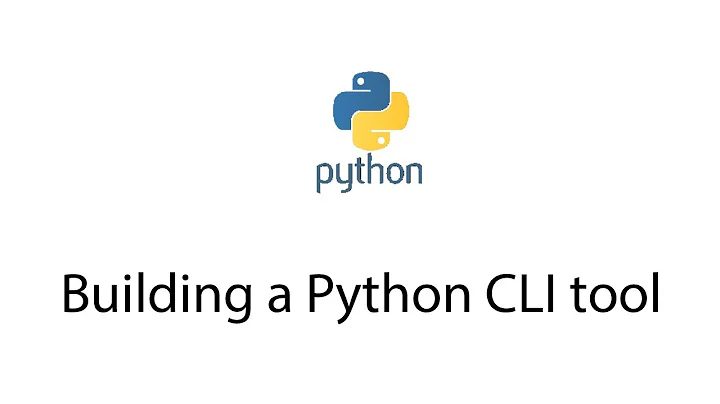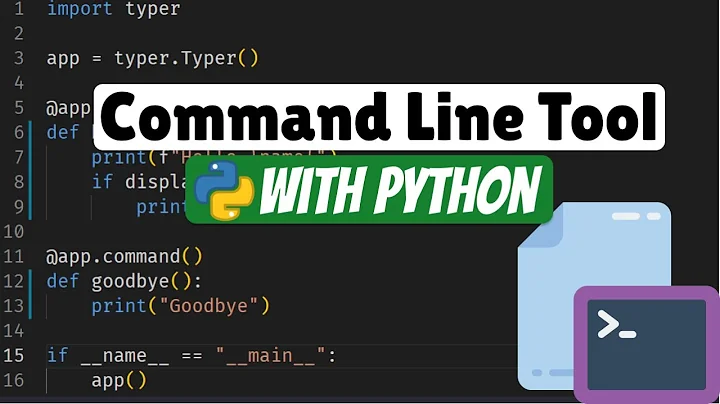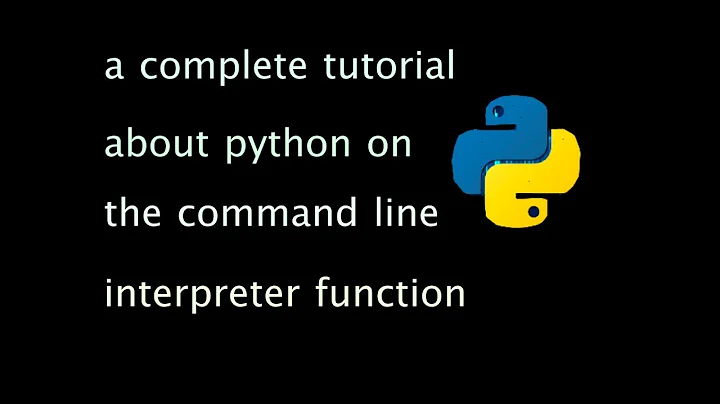How to make a command line interface or interpreter in Python
Solution 1
Derive from cmd.Cmd, overriding the various methods as necessary.
Solution 2
Use the cmd module:
- Reference : Custom (interactive) shell with Python
Other packages
You can also use various modules hosted at pypi that is built on top of cmd module
Solution 3
I'm not sure what you're looking for: it seems you want to build an interactive shell, but you also mention optparse, which is designed to streamline the creation of a module interface that can be run from the system shell rather than providing a shell in itself.
It looks like you do want your module to implement its own interactive shell, but maybe you also want to have some commands accessible from the command line, e.g. by calling your_script the_command --argument value --other-argument right from bash or what have you. This is the sort of thing that optparse is meant to provide, but it has been deprecated in favour of argparse. argparse is in the Python 2.7 standard library and can be installed in the standard way (e.g. as a dependency of your module, or by separate installation via PyPI, etc.) for older Pythons.
argparse makes it relatively straightforward to link particular options or subcommands to entry points (i.e. function calls) in your code. The documentation is quite detailed, and is worth a thorough read if you're likely to want to make a few such interfaces. For advanced usage you can do some interesting stuff, and make your code a bit more manageable, by creating a custom action.
Related videos on Youtube
pepero
Updated on June 04, 2022Comments
-
pepero almost 2 years
I have already developed class1.py, class2.py, etc. with functions implemented inside each class. e.g. Operator.py has add, minus, time, divide functions. How can I build a command line interface for these classes?
Also for this CLI, is it an infinite loop inside the
main()for interaction?And how can the CLI give some feedback such as, suggesting the user for the next operation or to input right command or type
--helpand check all the available commands, like the Bash shells?Also it seems there is the
optparsemodule from Python. Are there some good, complete, or high quality samples showing how a CLI is built? I would like to take this chance to learn how to write a CLI program.I have already developed several classes, and also a GUI to call the methods from these classes. Now I want to have a CLI, like the GUI, to use these classes. e.g. I have classes like CDContainer (with method like addCD, removeCD, etc), CD (with method like play, stop, pause), and I have a GUI that could be interacted. Now I want to have a CLI, which under the bash, I could run this CLI and call createCDContainer, addCD, removeCD commands.
If I use
cmd,class CDContainerCLI(cmd.Cmd): def do_CDContainer(self, line): print "create CD container" def do_addcd(self, line): print "add cd into the container"how do I add some options here? e.g., I want to
addcd --track 3 --cdname thriller.I think
--track 3 --cdname thrillerthey are the 4 arguments for theaddcdfunction. How to implement that?-
user1066101 over 13 years"how can I build a command line interface for these classes?"? That's really hard to guess at. What do you want to do that you can't do now? Can you provide any hints or examples?
-
-
pepero over 13 yearshi, lgnacio, thank you so much for your suggestions. I tried with cmd.Cmd, and it is very good. but there is a question, how to add options. e.g. If I def do_login, how can I add --username, --password, as options?







